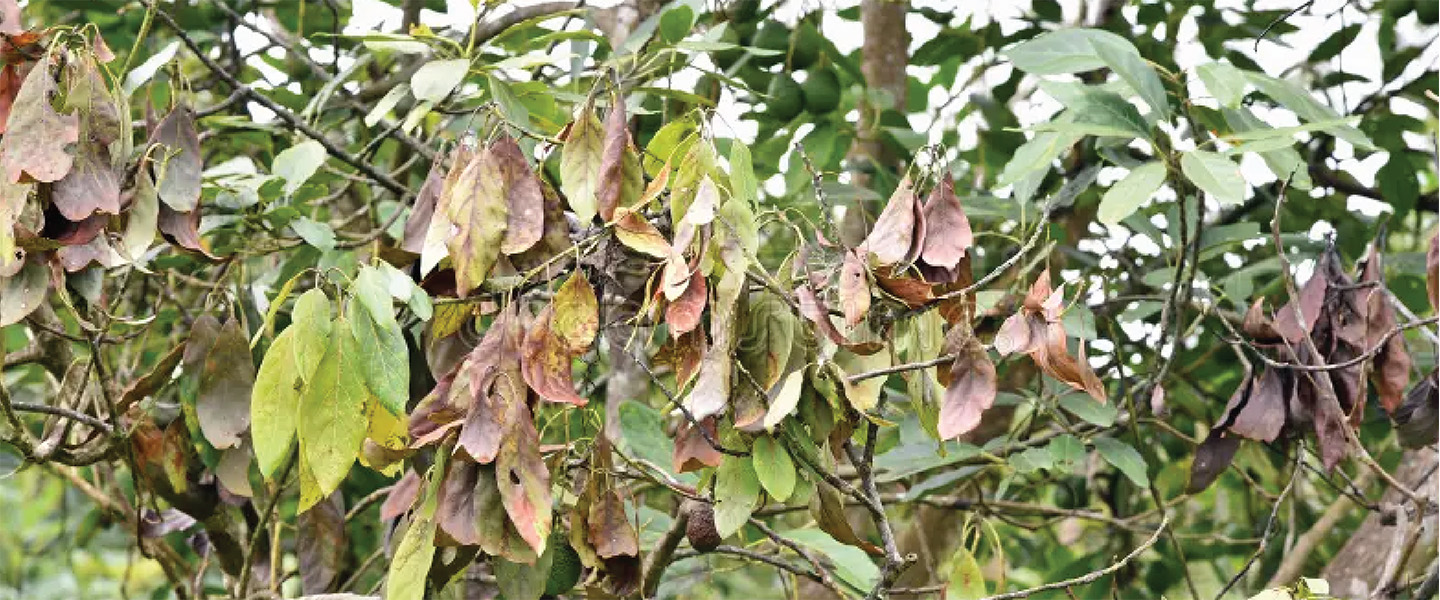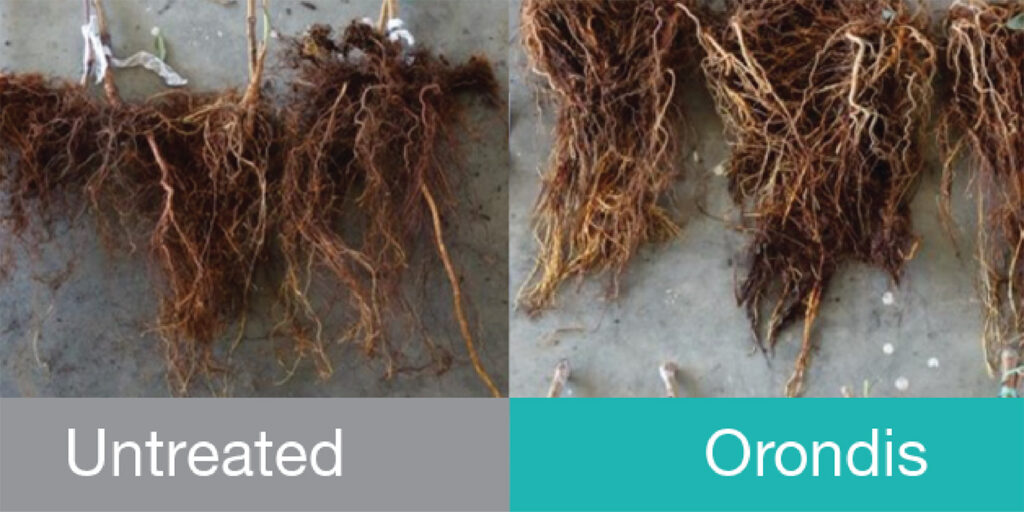Orondis: A Powerful Tool In The Fight Against Root Rot

Avocado growers in California have long grappled with the devastating effects of root rot, a disease caused by the soil borne pathogen hytophthora cinnamomi. This insidious fungus can significantly reduce tree health, fruit quality, and yield, ultimately leading to tree death.
After playing the role of villain in the California avocado industry for decades, P. cinnamomi is finding itself outmatched by a product that hit the market in 2021 called Orondis. A cutting-edge fungicide by Syngenta, Orondis is proving highly effective in controlling root rot.
When our Index Fresh staff presented the 2024 Cultural Seminar Series, they fielded numerous requests from avocado growers seeking more information about Orondis. The following information relies primarily on direct input from Syngenta, as well as experts in the avocado industry.
Why has root rot plagued the avocado industry for so long?
P. cinnamomi thrives in areas of excess soil moisture and poor drainage and can survive adverse conditions as persistent spores in the soil. Avocados didn’t evolve alongside the pathogen, which is thought to have originated in New Guinea, thus never developed resistance to P. cinnamomi. As Farm Advisor-Emeritus Gary Bender pointed out in his recent article in the California Avocado Society’s Avocado Quarterly, “California growers have developed an efficient way to harvest fruit and get it to the packinghouse, but that system also moves the fungus from grove to grove via dirty bins, dirty ladders, truck tires and on the boots of pickers who move from grove to grove.”
How Does Orondis Work?
Orondis, with its active ingredient oxathiapiprolin, operates through a unique mode of action. It targets a specific protein essential for the survival and reproduction of Phytophthora, effectively disrupting its life cycle. By reducing the pathogen’s population in the soil, Orondis promotes healthier root systems, improved water and nutrient uptake, and increased tree vigor.
“Orondis works directly against the Phytophthora propagules in the soil, rather than against the pathogen in the tree, effectively eradicating the pathogen from treated soil for a period following application,” stated Tim Spann in the winter 2021 edition of the California Avocado Commission’s “From the Grove” magazine.

Key Considerations for Orondis Application
Timing: Apply Orondis during periods of root flush, typically in spring and late summer. Note that Orondis has a restricted entry interval of 4 hours and a pre-harvest interval of 30 days.
Method of Application: Soil should be pre-wetted before application. Orondis should be applied through the irrigation water (micro-sprinkler or drip). A general recommendation, using drip irrigation as a guide, would be to allow for at least 6-8 hours (but no more than 10-12 hours of water) to be run after the injection of Orondis.
Rate: Labeled use rates are 4.8 fl oz/A – 9.6 fl oz/A. When establishing a new grove, or for heavy/severe infections, the higher end of labeled rates is recommended on a 6-month retreatment program for the first year. If soil testing confirms a significant reduction in Phytophthora propagules following treatment, you can consider switching to a maintenance program of 4.8 fl oz/A on a 6-month retreatment interval, or 9.6 fl oz/A on a 12-month retreatment interval.
Rotation: Resistance Management guidelines on the Orondis label instructs growers to limit sequential use of Orondis to two applications before rotating to a fungicide with a different mode of action.
Integrated Pest Management with Orondis
“While Orondis is extremely effective at reducing Phytophthora populations in the soil at low use rates, there is no silver bullet, and incorporating things like cultural controls are also imperative for long-term management of the disease,” states Dr. Jeannette Rapicavoli, Agronomic Service Representative for Syngenta.
Optimal results rely on combining various strategies, including:
Cultural Practices: Help minimize disease pressure by irrigating appropriately (duration and amount), no wetting of trunks, planting on berms, applying organic mulch and ensuring proper tree nutrition Resistant Rootstocks: Using resistant rootstocks can provide a strong defense against the pathogen.
Sanitation: Prevent soil or water movement from infested areas.
Fungicide Applications: Timely applications of Orondis can effectively control Phytophthora.


